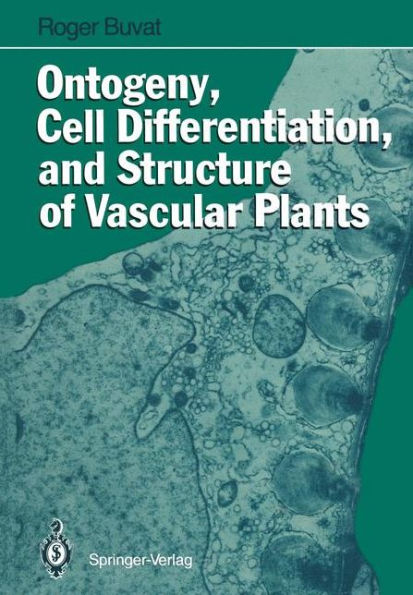Ontogeny, Cell Differentiation, and Structure of Vascular Plants
With improved microscope and preparation techniques, studies of histo logical structures of plant organisms experienced a revival of interest at the end of the 19th century. From that time, histological data have substantially studies of the pioneers in botanical science. From the beginning of the 20th century, the microscope allowed research in cell structure, the general functional unit of living beings. Advances in cytology gradually influenced histology, at first, however, rather timidly. Only the new and spectacular progress in ultrastructural cytology and cyhemistry led to a great increase in modern work on the structures of vascular plants and the related ontogenical and physiological data, thanks to the use of the electron microscope and the contribution of molecular biology. Not only did new techniques lead to new approaches, but achieve ments in general biology shifted the orientation of research, linking in vestigation to the physiological aspects of cell and tissue differentiation. Among these, the demonstration of the general principles of development, and the characterization of molecules common to plants and animals, which control and govern the main basic functions of cells and tissues, have widened the scope of modern research on plant structures. Present trends in biological research show that it is necessary to know the structures thoroughly, from the ultrastructural cytological scale to the scale of tissue and organ arrangement, even for physiological research on either cells, tissues, or whole organs. The study of growth factors, differentiation, or organogenesis can be mentioned as an example.
1021135032
Ontogeny, Cell Differentiation, and Structure of Vascular Plants
With improved microscope and preparation techniques, studies of histo logical structures of plant organisms experienced a revival of interest at the end of the 19th century. From that time, histological data have substantially studies of the pioneers in botanical science. From the beginning of the 20th century, the microscope allowed research in cell structure, the general functional unit of living beings. Advances in cytology gradually influenced histology, at first, however, rather timidly. Only the new and spectacular progress in ultrastructural cytology and cyhemistry led to a great increase in modern work on the structures of vascular plants and the related ontogenical and physiological data, thanks to the use of the electron microscope and the contribution of molecular biology. Not only did new techniques lead to new approaches, but achieve ments in general biology shifted the orientation of research, linking in vestigation to the physiological aspects of cell and tissue differentiation. Among these, the demonstration of the general principles of development, and the characterization of molecules common to plants and animals, which control and govern the main basic functions of cells and tissues, have widened the scope of modern research on plant structures. Present trends in biological research show that it is necessary to know the structures thoroughly, from the ultrastructural cytological scale to the scale of tissue and organ arrangement, even for physiological research on either cells, tissues, or whole organs. The study of growth factors, differentiation, or organogenesis can be mentioned as an example.
109.99
In Stock
5
1

Ontogeny, Cell Differentiation, and Structure of Vascular Plants
581
Ontogeny, Cell Differentiation, and Structure of Vascular Plants
581Paperback(Softcover reprint of the original 1st ed. 1989)
$109.99
109.99
In Stock

Product Details
| ISBN-13: | 9783642736377 |
|---|---|
| Publisher: | Springer Berlin Heidelberg |
| Publication date: | 12/16/2011 |
| Edition description: | Softcover reprint of the original 1st ed. 1989 |
| Pages: | 581 |
| Product dimensions: | 6.69(w) x 9.61(h) x 0.05(d) |
From the B&N Reads Blog
